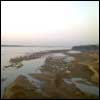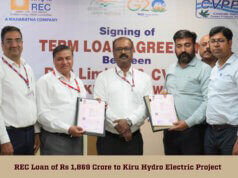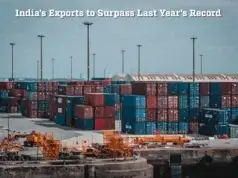Despite widespread protests on March 3, 2014, by the locals and Dakshina Kannada industry bodies, Karnataka Chief Minister K. Siddaramaiah laid the foundation stone of the controversial Yettinahole project. The Netravati River Diversion Project, as it is also known, is expected to supply water to the water-starved districts of Hassan, Bengaluru Rural and Chikkaballapur by diverting Netravati river water in Dakshina Kannada to these eastern districts.
The mega project, which is estimated to cost more than Rs.8,000 crore, has faced several challenges from the day of conception till the date of issuing tenders and laying of the foundation stone. On completion, the project would divert more than 24 tmcft of water from Netravati to the above districts.
In a joint statement, Dakshina Kannada industry—Kanara Chamber of Commerce and Industry, Kanara Small Industries Association and District Small Industries Association—said that they were opposing the diversion project as Netravathi river was the “lifeline of Dakshina Kannada district” and because it did not considering the negative impact on the coastal region.
According to experts, the project, if implemented, would be environmentally disastrous. The catchment area of Netravati, which is a part of the Western Ghats, is recognised as one of the 25 hotspots for biodiversity conservation in the world. Apart from being the lifeline of the district, the Netravati has several tributaries that keep alive the hydro-system of the Western Ghats by feeding excess water into the streams, small rivers and rivulets.
Speaking to Projectmonitor, Prof. S.G. Mayya, Chairman, Civil Engineering department, National Institute of Technology Karnataka, Suratkal, said that diverting Yettinahole was as good as diverting Netravati, as Yettinahole and Kumaradhara are Netravati’s major tributaries. Besides, many parts of Dakshina Kannada and Udupi face severe water shortage for eight months in a year.
“Netravati being the lifeline of these districts, government must provide water to the downstream rather than planning to divert water as the situation in the coastal areas in the state is no better,” Prof. Mayya said.
The Netravati River Diversion Project envisages the formation of a series of canals at mid-elevation of the Western Ghats starting from Gadikal Gudda near Naravi, passing through Shirlal, Elaniru, Didipe and Charmady, and crossing NH-48 and the Southern Railway line near Shiradi Ghats and across the ridgeline of Yettinahole. A second garland canal is proposed south of Shiradi from Surlabi Betta through Koikaslu Betta in Kumaradhara catchment. Yet another canal is also proposed for the catchment of Bhadra that joins the garland canal from the Netravati catchment near Samse.
Above all, the project which also proposes to form 38 reservoirs across 38 streams in the Western Ghats would submerge about 77 sq. km of grassland and surroundings in the Kumaradhara catchment area and necessitate the rebuilding of damaged access roads and canals.
According to the feasibility report, the entire river system of Karnataka yields 3,440 tmc. The west flowing rivers constitute a major portion of the yield—nearly 2,000 tmc annually (58 per cent). Though a major portion of water flows into the Arabian sea, it is neither technically viable nor financially feasible to divert water due to environment constraints and presence of Western Ghats barrier.
The project proposal comprises two stages—surplus waters of Yattinhole reservoir of Netravati basin would be lifted to 19.5m high and combined surplus waters of Kerihole and Hongadhalladhole reservoirs would be lifted to 61.31m high for diverting into Hemavati river of Cauvery basin. While the Yattinahole-Hemavati river conveyance system would be of 3.54 km long, including 3.04-km long tunnel, the Kerihole-Hongadhalladhole reservoir interlinking tunnel would be 3.98 km long and Hongadhalladhole-Hemavati river conveyance system would be of 3.3 km long with a tunnel of 1.375 km.
Meanwhile, the construction of a vented dam across Netravathi river at Thumbe, for providing improvements of water supply facilities to Mangalore, Karnataka, is expected to be completed by 2015. The project was expected to be completed by June 2013. The slow progress in work has escalated the project cost from Rs.48.21 crore to Rs.75.5 crore. The state government has released Rs.19.5 crore for the project.
The 343.5m wide and 12m tall dam is being built by Ritwik Projects Ltd in joint venture with Swapna Constructs. The dam could store 15 million cubic metres of water, whereas the existing dam could store up to 4 million cubic metres of water. Karnataka Urban Water Supply and Drainage Board is the implementing agency of the project.











